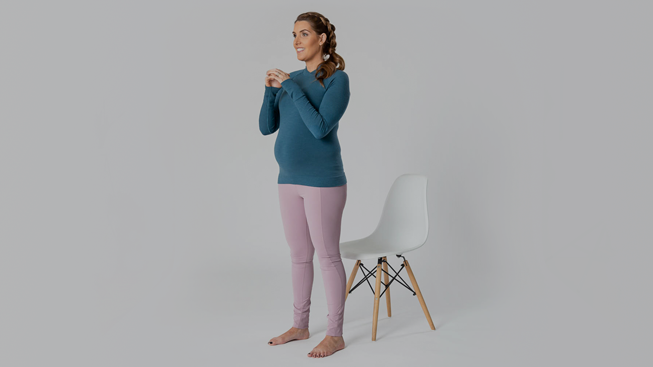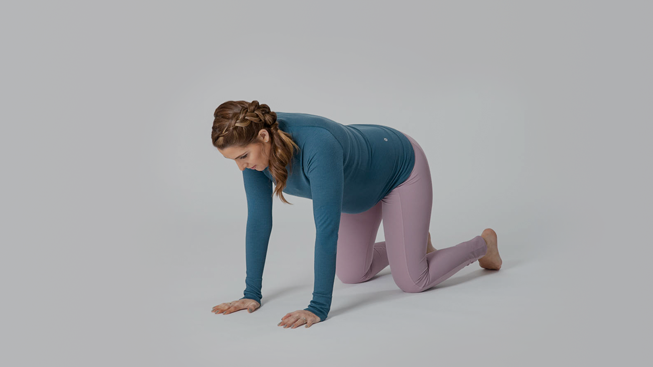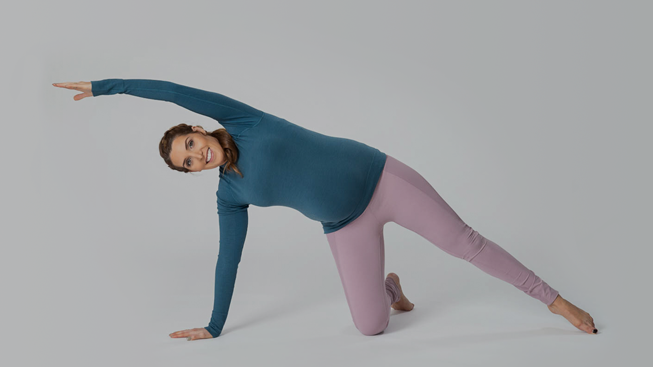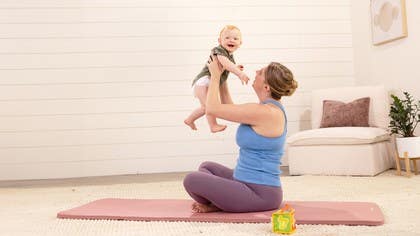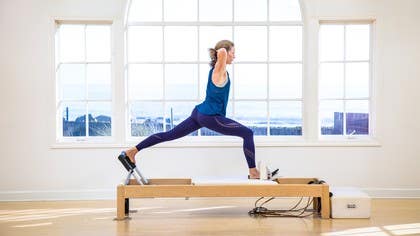Prenatal Pilates in the Third Trimester
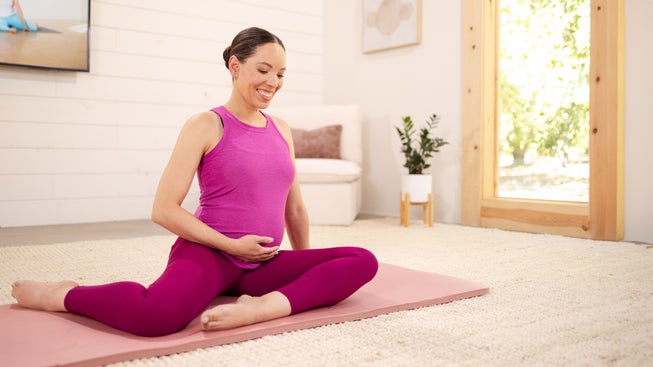
About Pilates in the Third Trimester
Welcome to the third trimester, otherwise known as the homestretch of pregnancy! Your belly seems to be getting larger by the minute, with the growing size of your uterus throwing the alignment of your body of whack. Postural changes typically encompass a more exaggerated anterior tilt of the pelvis, which can shorten the hip flexors and weaken the hamstrings and the glutes. The surge in energy you experienced in the second trimester has likely diminished, and you’re probably feeling exhausted, to say the least. That’s why, during this final trimester, it’s a good idea to give yourself more permission to take it slow—and that should extend to your workouts, too.
What are the benefits of Pilates during the third trimester?
In addition to benefiting emotional well-being, Pilates works to alleviate and prevent joint pain by increasing circulation and stability within the body. It can also help ease symptoms of the pregnancy-related condition known as pubic symphysis. The mind-body connection honed in Pilates will serve you well during childbirth as well.
Is Pilates safe during the third trimester?
Although prenatal Pilates is still an excellent, safe method of exercise for the pregnant body, allow the focus of your sessions and classes in the third trimester to shift. Concentrate on deepening the connection to your breath and finding relaxation as you go about creating balanced strength with the Pilates movements. Feel free to exercise as much or as little feels good to you during this time. Let go of any expectations or judgements of yourself. You’ve got this, mama!
Prenatal Pilates Exercises (Third Trimester)
Sit Squat
Sit Squat
Work on maintaining your posture while you build strength in your legs with this modified Squat exercise.
Bird Dog
Bird Dog
You can gently work your core and challenge your stabilizers with this Bird Dog exercise. Repeat on each side.
Kneeling Side Crunch
Kneeling Side Crunch
This Kneeling Side Crunch exercise will target the side of your body so you can strengthen your obliques and your hips. Repeat on each side.
Lunge Bicep Curl
Lunge Bicep Curl
Work on your balance while you strengthen your arms and legs in this Lunge with a Bicep Curl sequence. Repeat on each side.
Exercises to Try
During the third trimester, workouts on the Pilates Reformer are highly recommended. Although some of the exercises, such as those done flat on your back or your belly, are no longer appropriate, it’s easy to make modifications for the prenatal body. Arm work with the straps, while seated on the sitting box, is a great option, as is standing work, if you’re confident enough in your balance. Footwork with an arc behind your back is another effective way to modify while still getting the benefits, which include better posture and alignment. Take the Mat work to a standing position, using a Chair or counter for balance if needed. Opt for a wider stance, with your legs turned out instead of in a parallel position, to accommodate your belly. Side-lying exercises are great for leg, glute and pelvic floor strength as well.
Exercises to Avoid
For starters, keep the second trimester precautions in mind: Avoid exercises done while lying on your back, when the uterus can compress the inferior vena cava and the aorta, restricting blood flow to the baby and making you feel dizzy. At this point, you probably won’t feel comfortable doing prone exercises, or those done while lying facedown. Forward flexion done while supine, like the Hundred, the Series of Five and other chin-to-chest movements, is still a no-no, since diastasis recti, where your abdominals split from too much pressure from the uterus, is a concern as your belly expands. Loaded flexion and exercises that add intra-abdominal pressure like Planks, in particular, should be avoided, as they are too strenuous on the abdominals and pelvic floor.
Precautions and Modifications
Incorporating support props, such as the Reformer Box, Arc, or Wedge, will help put your body in a safer, more comfortable position. The Reformer also lends itself to working in various body positions, such as kneeling or sitting, that can accommodate a growing bump. Use props, such as resistance bands or light weights, for exercises like Chest Expansion to open your chest and strengthen your back.
Our Advice
Now is definitely not the time to overexert yourself. Move at your own pace, listening to your body throughout your workouts and taking breaks as needed. Don’t be afraid to speak up; if something doesn’t feel good, ask your Pilates teacher to show you how to perform the movement in a different position. If you’re experiencing any belly button pain, that could signal a hernia. Take a break from exercise and consult your doctor.
Prenatal Pilates Moves for Labor
Frequently Asked Questions
What other types of exercises are recommended during the third trimester?
To supplement your prenatal Pilates, choose another moderate form of exercise that doesn’t cause you to overexert or overheat your body. Good choices include walking with friends and swimming, which are both gentle on the joints.
Can Pilates help relieve common pain issues during third trimester?
Pilates exercise is a great way to manage and prevent aches and pains, such as joint stiffness, back pain and sciatica, in the third trimester. Working on the Reformer or the mat can also help ease symptoms of the pregnancy-related condition known as pubic symphysis.
What if Pilates is causing pain or discomfort?
Only you know your body, so it’s important to listen to your intuition. If something doesn’t feel good, ask your Pilates teacher to recommend an alternate exercise or to help tweak your alignment.
Related Articles
Your Pilates Anytime Membership Benefits
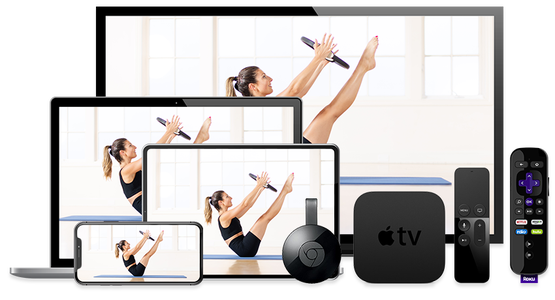
- 15-Day Free Trial
- Unlimited Access to Thousands of Classes
- 95+ Pilates Programs and Challenges
- No Ads
- New Videos Weekly
- Available on All Your Favorite Devices
